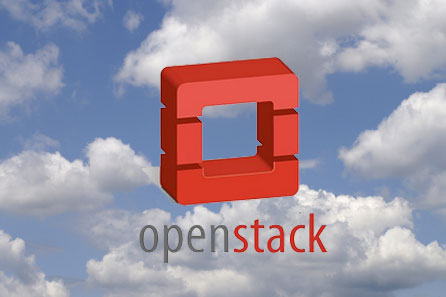OpenStack Rolls Out New Features With Folsom
OpenStack, an open source cloud operating system, launched Folsom, its sixth release, which includes new components for networking and storage services.
September 28, 2012


openstack-cloud
OpenStack, the open source cloud platform, has added new features with this week's rollout of its newest release, known as Folsom.
OpenStack, an open source cloud operating system, launched its sixth release this week, including new components for networking and storage services.
This release, named Folsom, will allow developers to automate pools of compute, storage and networking resources, and has emerging Software Defined Networking (SDN) solutions included. OpenStack Networking currently includes plug-in support for Open vSwitch, the Ryu open source network operating system, standard Linux bridge networking and commercial solutions from Cisco, Nicira, and NEC, with others in development.
“The Folsom release cycle brought greater maturity to our software and processes, as OpenStack developers produced a stable, feature-rich update,” said Jonathan Bryce, executive director of the OpenStack Foundation. “Hitting all of our key targets with this release is proof the transition to a Foundation did not slow us down. By preserving our meritocratic technical governance structure, we had even more developers contributing and are moving at a faster rate than ever before, while also being conscious of our community of users relying on the software.”
The Folsom release shows continued emphasis on stability and extensibility, while expanding the capabilities with considerable networking, block storage and hyper-V support. Also included with this release are localization features, introducing a new translation framework for the software, user-facing guides and documentation.
Two of the largest OpenStack public clouds, HP and Rackspace, are putting Folsom into production, offering users the choice they expect when standardizing on OpenStack as their open cloud platform.
New Features in OpenStack Core Projects
While stability and manageability were key themes of the Folsom release, contributors also added 185 new features across compute, storage and networking:
OpenStack Compute (code-name Nova) –With a focus on ease of use, performance, and security, the latest release of OpenStack Compute makes it easier for operators to configure large pools of virtual machines. A new "config drive" capability stores network configuration information, eliminating the need for DHCP, and a new "host aggregation" feature places workloads into the best pools of resources for the job, such as GPU clusters for HPC work. Performance and security enhancements enable users to expose unique features of the CPUs powering their cloud, including support for Trusted Computing, which relies on hardware to verify the cloud computing environment's state. A cross-company Hyper-V team formed to reintroduce and improve support for the hypervisor.
OpenStack Object Storage (code-name Swift) – Among many operational enhancements, operators can now connect OpenStack Object Storage to a statsd server and receive hundreds of real-time metrics about their cluster to help with troubleshooting, diagnostics, day-to-day operational issues, and long-term capacity management. To improve performance, clusters with high write requirements or large quantities of stored objects can now take advantage of solid-state drives (SSDs) for storing metadata without incurring a high overhead in disk space. Additionally, the ability to place data in cluster locations that are “as unique-as-possible,” makes it easier to deploy small clusters and provides better flexibility for all clusters when handling hardware failure.
OpenStack Block Storage (code-name Cinder) – The first full release of OpenStack Block Storage implements advanced, extensible block and volume storage capabilities, while still supporting previously deployed OpenStack Volumes. Previously a sub-component of OpenStack Compute, the Block Storage capabilities of OpenStack have been promoted to a full project with a dedicated development team that will increase the rate of innovation as the OpenStack development community grows.
OpenStack Networking (code-name Quantum) - An advanced network automation platform that empowers users to choose their back-end technology, OpenStack Networking includes support for Open vSwitch, the Ryu open source network operating system, standard Linux bridge networking and commercial solutions from Cisco, Nicira, and NEC via a plug-in architecture. Additionally, the release includes significant updates to control Layer 2 networking, IP address management, API quotas, notifications, extension support for Layer 3 forwarding, Secure Network Address Translation (SNAT), and floating IPs. An integrated API policy framework allows network control at the tenant level or the admin-only level to be defined using the OpenStack Identity service, depending on an Enterprise or Service Provider's requirements.
OpenStack Dashboard (code-name Horizon) –The second full release of OpenStack Dashboard brings usability improvements in launching Compute instances, working Object Storage resources, and managing OpenStack projects and users. Other feature advances include support for public and private image uploads and management of advanced networks. End users will appreciate better cross-browser support, timezone support, dynamic quota displays, improved error handling, and performance improvements.
OpenStack Identity (code-name Keystone) –The second full release of OpenStack Identity brings improved support for Public Key Infrastructure (PKI) authentication and improved integration and management across OpenStack services.
OpenStack Image Service (code-name Glance) –There were major advancements in usability and functionality to the Image Service, including a new API, a new client library, new replication options for increased performance and security improvements reaching from the client to the image storage system.
About the Author
You May Also Like

.jpg?width=300&auto=webp&quality=80&disable=upscale)





